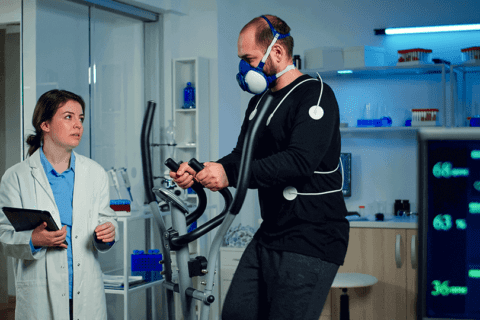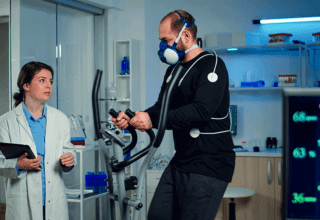Table of Contents
What is Physiotherapy
Physiotherapy, also known as physical therapy, is a healthcare discipline that focuses on restoring and maintaining physical function and mobility in individuals with various health conditions. It plays a crucial role in promoting overall health and improving the quality of life for patients. In this comprehensive article, we will explore the significance of physiotherapy and shed light on the expertise of Dr. Iqra Kiran, a prominent physical therapist based in Rawalpindi.
1. The History and Evolution of Physiotherapy
To truly understand the impact of physiotherapy in modern healthcare, it’s essential to delve into its history and evolution. We’ll explore how physiotherapy practices have developed over the centuries and the key milestones that have shaped the profession into what it is today.
The roots of physical therapy can be traced back to ancient civilizations, where various forms of physical manipulations and exercises were used to treat injuries and ailments. However, it was during the late 19th and early 20th centuries that physiotherapy began to emerge as a formal profession. The polio epidemic in the early 20th century led to the establishment of rehabilitation centers where physiotherapy was used to aid polio patients in regaining function.
Over time, physical therapy evolved into a science-based discipline, incorporating advancements in medical knowledge and technology. Today, it is a highly specialized field with diverse applications across numerous medical domains.
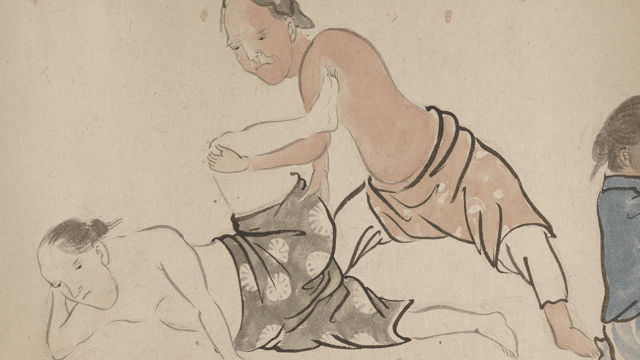
2. The Science Behind Physical therapy
Physical therapy is grounded in scientific principles and evidence-based practices. In this section, we’ll delve into the anatomical and physiological foundations of physiotherapy, explaining how therapists utilize their knowledge to assess and treat patients effectively.
Human anatomy is a cornerstone of physical therapy. Physical therapists possess an in-depth understanding of the musculoskeletal system, nervous system, cardiovascular system, and other bodily systems. This knowledge allows them to identify the root cause of physical impairments accurately and design appropriate treatment plans.
Moreover, physiotherapists are well-versed in biomechanics – the study of human movement. They analyze how the body moves and functions, enabling them to identify faulty movement patterns and imbalances that may contribute to injuries or hinder recovery.
In addition to anatomy and biomechanics, physical therapy incorporates principles of exercise physiology. Therapeutic exercises play a central role in physiotherapy, aiming to strengthen muscles, increase flexibility, improve balance, and restore normal movement patterns.
3. The Role of a Physical Therapist
A physical therapist, like Dr. Iqra Kiran, is a licensed healthcare professional who specializes in physical therapy. These professionals undergo extensive education and training to become experts in human anatomy, biomechanics, and therapeutic techniques. We’ll take an in-depth look at the role of a physical therapist and the value they bring to patient care.
Physical therapists play a multifaceted role in healthcare. They are diagnosticians, conducting comprehensive assessments to identify the physical impairments and functional limitations of their patients. Based on their evaluations, they develop personalized treatment plans tailored to each individual’s needs and goals.
The treatments provided by physical therapists may include manual therapy techniques, therapeutic exercises, modalities such as ultrasound and electrical stimulation, and education on injury prevention and self-management. They guide patients through their recovery journey, monitoring progress and adjusting treatment as necessary to achieve optimal outcomes.
Furthermore, physical therapists are educators. They empower patients with knowledge about their conditions and equip them with strategies to manage their symptoms independently. Patient education is a crucial aspect of physiotherapy, as it promotes long-term health and empowers individuals to take an active role in their well-being.
4. The Benefits of Physiotherapy on Physical Health
Physical therapy offers numerous benefits to individuals of all ages and physical conditions. From pain relief to improved mobility and function, we’ll explore the various positive effects that physical therapy can have on physical health and well-being.
4.1. Pain Management:
Physiotherapy employs various techniques to manage pain effectively. Manual therapy, which includes joint mobilizations and soft tissue manipulation, can reduce pain and improve joint function. Additionally, therapeutic exercises help strengthen supporting muscles, relieving stress on affected areas and alleviating pain.

4.2. Improved Mobility:
Physical therapists work on improving joint range of motion and flexibility through targeted exercises and stretching routines. This enhanced mobility allows individuals to perform activities of daily living with greater ease and comfort.

4.3. Rehabilitation after Injury or Surgery:
Physiotherapy is instrumental in post-injury or post-surgery rehabilitation. It aids in restoring function, promoting tissue healing, and reducing the risk of complications. The guidance of a skilled physical therapist ensures a safe and effective recovery process.

4.4. Management of Chronic Conditions:
For individuals with chronic conditions like arthritis or chronic back pain, physiotherapy can be a vital part of their management plan. Therapeutic exercises and manual therapy can help reduce symptoms, enhance function, and improve overall quality of life.

4.5. Enhanced Balance and Coordination:
Through targeted exercises and balance training, physiotherapy improves coordination and stability, reducing the risk of falls, particularly in older adults.

5. The Psychological Impact of Physiotherapy
Beyond the physical benefits, physiotherapy can have a profound impact on the psychological well-being of patients. We’ll discuss how the therapeutic relationship, exercise, and the achievement of treatment goals can positively affect mental health.
The journey of recovery through physiotherapy often involves close interaction between the physical therapist and the patient. This therapeutic alliance creates a supportive and empathetic environment, which can significantly impact a patient’s emotional well-being.
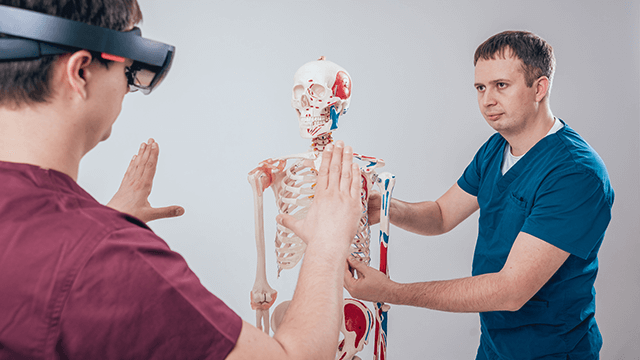
Regular exercise, a key component of physiotherapy, is known to have positive effects on mental health. Physical activity triggers the release of endorphins, neurotransmitters responsible for feelings of well-being and happiness. Engaging in regular exercises can reduce stress, anxiety, and symptoms of depression.
Furthermore, the sense of accomplishment that comes with achieving treatment goals in physiotherapy can boost self-esteem and foster a positive outlook on life. Overcoming physical challenges can empower patients and instill a sense of control over their health.
6. Conditions Treated with Physiotherapy
Physiotherapy is highly versatile and can address a wide range of health conditions. In this section, we’ll explore the common conditions that are treated with physiotherapy, including musculoskeletal injuries, neurological disorders, post-surgery rehabilitation, and sports injuries.
6.1. Musculoskeletal Injuries:
Physiotherapy is particularly effective in treating musculoskeletal injuries, such as sprains, strains, fractures, and overuse injuries. Physical therapists employ various techniques to reduce pain, inflammation, and muscle spasms, as well as promote healing and tissue repair.

6.2. Neurological Disorders:
For individuals with neurological conditions such as stroke, spinal cord injuries, multiple sclerosis, or Parkinson’s disease, physiotherapy can be instrumental in improving mobility, strength, and balance. Neurorehabilitation techniques are tailored to each patient’s unique needs and goals.

6.3. Post-Surgery Rehabilitation:
After undergoing surgery, rehabilitation is critical for a successful recovery. Physiotherapy helps patients regain strength, flexibility, and function following various surgical procedures, such as joint replacements or ligament repairs.
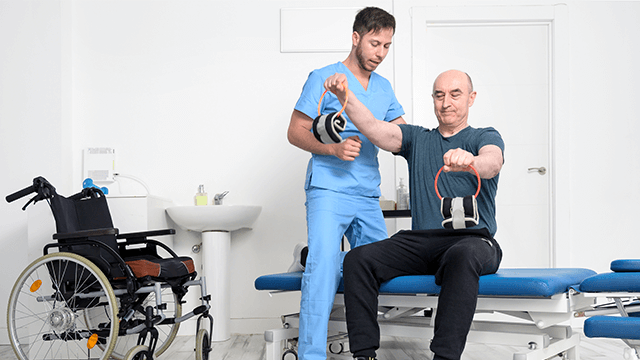
6.4. Sports Injuries:
Athletes often encounter injuries related to their sport, such as ligament tears, muscle strains, or concussions. Physiotherapy plays a key role in sports injury rehabilitation, aiming to get athletes back to peak performance safely and efficiently.

7. Techniques and Modalities Used in Physiotherapy
Physiotherapy employs a diverse range of techniques and modalities to facilitate healing and recovery. From manual therapy to therapeutic exercises, ultrasound therapy to electrical stimulation, we’ll provide detailed insights into the various methods used by physical therapists.
7.1. Manual Therapy:
Manual therapy techniques involve hands-on manipulations of muscles, joints, and soft tissues. Skilled physical therapists use their hands to apply precise pressure and mobilization to improve joint mobility, reduce pain, and restore normal tissue function.

7.2. Therapeutic Exercises:
Therapeutic exercises are a fundamental aspect of physiotherapy. Physical therapists design customized exercise programs to address specific impairments and goals. These exercises may focus on strengthening weak muscles, improving flexibility, enhancing balance, or promoting overall functional ability.

7.3. Modalities:
Physiotherapy utilizes various modalities to complement therapeutic interventions. Modalities like ultrasound therapy, electrical stimulation, heat, and cold therapy are used to reduce inflammation, promote tissue healing, and provide pain relief.

7.4. Hydrotherapy:
Hydrotherapy, also known as aquatic therapy, involves exercises performed in a pool. The buoyancy of water reduces the stress on joints, making it an excellent option for individuals with mobility challenges or weight-bearing restrictions.

8. Specialized Areas within Physiotherapy
Physiotherapy encompasses various specialized areas, each targeting specific patient populations and conditions. We’ll explore subfields such as pediatric physiotherapy, geriatric physiotherapy, and women’s health physiotherapy, among others.
8.1. Pediatric Physiotherapy:
Pediatric physiotherapists specialize in working with infants, children, and adolescents with developmental delays, congenital conditions, or neurological disorders. They address a wide range of issues, including gross motor skills, posture, and physical challenges associated with specific medical conditions.

8.2. Geriatric Physiotherapy:
Geriatric physiotherapy focuses on the unique needs of older adults. Physical therapists in this area address age-related mobility issues, balance problems, and chronic conditions that commonly affect seniors, helping them maintain independence and improve their overall quality of life.

8.3. Women’s Health Physiotherapy:
Women’s health physiotherapy is concerned with the assessment and treatment of conditions related to women’s reproductive health. This may include pelvic floor dysfunction, pre and postnatal care, and musculoskeletal issues related to pregnancy.

8.4. Sports Physiotherapy:
Sports physiotherapists specialize in working with athletes, from professional sportspeople to amateur enthusiasts. They provide injury prevention strategies, rehabilitation after sports-related injuries, and guidance on optimizing athletic performance.

9. Importance of Physiotherapy in Injury Prevention and Performance Enhancement
Physiotherapy isn’t only about treating existing conditions; it’s also vital in preventing injuries and enhancing performance. Through tailored exercise programs, ergonomic advice, and sports-specific training, physical therapists play a key role in injury prevention and optimizing athletic abilities.
9.1. Injury Prevention:
Physiotherapists assess an individual’s movement patterns, strength, and flexibility to identify potential risk factors for injuries. Based on this evaluation, they design injury prevention programs that focus on strengthening weak areas, improving flexibility, and promoting proper body mechanics.
9.2. Ergonomic Assessment:
In workplaces, physiotherapists can perform ergonomic assessments to identify factors that may contribute to repetitive strain injuries or musculoskeletal disorders. They suggest adjustments to workstations and provide guidance on ergonomically correct postures to reduce the risk of work-related injuries.
9.3. Sports Performance Enhancement:
Athletes seeking to improve their performance can benefit from physiotherapy. Physical therapists work closely with athletes to develop personalized training programs that target specific athletic goals, enhance strength and flexibility, and optimize sports-specific skills.
10. Understanding Dr. Iqra Kiran, a Renowned Physical Therapist in Rawalpindi
Dr. Iqra Kiran is a well-respected physical therapist based in Rawalpindi, known for her exceptional skills and dedication to her patients. We’ll delve into her background, education, and professional accomplishments, highlighting the impact she has made in the field of physiotherapy.
10.1. Early Life and Education:
Dr. Iqra Kiran’s passion for physiotherapy began at an early age. She pursued her education in the field, completing her bachelor’s degrees in physical therapy. Her thirst for knowledge and dedication to her craft set the foundation for her successful career.
10.2. Professional Achievements:
Throughout her career, Dr. Iqra Kiran has gained extensive experience in various physiotherapy settings, including hospitals, clinics, and sports rehabilitation centers. Her commitment to staying abreast of the latest advancements in the field has earned her recognition and respect among her peers.
10.3. Patient-Centered Care:
One of the hallmarks of Dr. Iqra Kiran’s approach to physiotherapy is her patient-centered care. She prioritizes the needs and goals of her patients, tailoring treatment plans to address their unique challenges and aspirations. This personalized approach has resulted in numerous success stories and satisfied patients.
11. Dr. Iqra Kiran’s Approach to Physiotherapy
Dr. Iqra Kiran follows a patient-centered approach to physiotherapy. She conducts thorough assessments, listens to her patients’ concerns, and designs personalized treatment plans to achieve the best possible outcomes. In this section, we’ll explore her treatment philosophy and methodologies.
11.1. Holistic Assessment:
Dr. Iqra Kiran believes in treating the whole person, not just the symptoms. She conducts comprehensive assessments to identify not only the physical impairments but also the underlying factors contributing to the patient’s condition.
11.2. Evidence-Based Practice:
Dr. Iqra Kiran’s treatment approaches are rooted in evidence-based practices. She keeps herself updated with the latest research and clinical guidelines to ensure that her patients receive the most effective and safe treatments.
11.3. Active Patient Participation:
Patients are active participants in their recovery process under Dr. Iqra Kiran’s care. She collaborates with them to set realistic goals and empowers them with knowledge and tools to take charge of their health.
11.4. Continuous Monitoring and Adjustment:
As patients progress through their treatment plans, Dr. Iqra Kiran continuously monitors their outcomes and adjusts interventions as needed. She believes in the importance of flexibility in treatment, recognizing that each patient’s journey is unique.
12. Success Stories and Testimonials
Many patients have experienced remarkable improvements under Dr. Iqra Kiran’s care. We’ll showcase inspiring success stories and positive testimonials from patients whose lives have been transformed through her expertise and the power of physiotherapy.
12.1. Case Studies:
Several case studies will illustrate the diverse range of conditions Dr. Iqra Kiran has treated and the positive outcomes achieved through her therapeutic interventions.
12.2. Patient Testimonials:
Patients themselves will share their experiences and gratitude for the care they received from Dr. Iqra Kiran. These testimonials will highlight the impact of physiotherapy on their lives and the difference a dedicated and skilled therapist can make.
13. Collaborative Care: The Role of Physiotherapy in Multidisciplinary Teams
Physiotherapists often work as part of multidisciplinary teams to provide comprehensive care to patients. We’ll examine how physiotherapy integrates with other medical specialties to optimize patient outcomes.
13.1. Interdisciplinary Communication:
Physiotherapists collaborate with physicians, nurses, occupational therapists, and other healthcare professionals to ensure that patients receive holistic care. This team-based approach facilitates better coordination and improved patient outcomes.
13.2. Coordinated Treatment Plans:
For patients with complex medical conditions, a multidisciplinary team can develop coordinated treatment plans that address all aspects of their health. Physiotherapy plays a vital role in enhancing physical function and mobility, complementing other medical interventions.
14. The Future of Physiotherapy: Advancements and Innovations
As with any healthcare field, physiotherapy continues to evolve with advancements in technology and research. In this section, we’ll explore the latest innovations and trends in physiotherapy that promise to shape the future of the profession.
14.1. Telehealth and Remote Monitoring:
Advancements in telehealth and digital health technologies have opened new possibilities for physiotherapy. Remote consultations, home exercise programs, and wearable devices enable patients to access physiotherapy services from the comfort of their homes.
14.2. Virtual Reality in Rehabilitation:
Virtual reality is being explored as a tool for rehabilitation, particularly in neurological conditions. Virtual environments can simulate real-life scenarios, aiding patients in relearning movement patterns and improving balance and coordination.
14.3. Data-Driven Care:
Data analytics and artificial intelligence are being used to analyze patient outcomes and treatment effectiveness. This data-driven approach allows physiotherapists to tailor treatments based on individual patient responses.
15. How to Choose the Right Physiotherapist for Your Needs
When seeking physiotherapy, it’s essential to find the right therapist for your individual needs. We’ll provide valuable tips and considerations for choosing the best-fit physiotherapist to guide your treatment journey.
15.1. Credentials and Qualifications:
Ensure that the physiotherapist is licensed and has the necessary qualifications and certifications to practice. Look for additional specialization or training relevant to your specific condition, if applicable.
15.2. Experience and Expertise:
Consider the therapist’s experience in treating conditions similar to yours. A physiotherapist with expertise in your specific area of concern is likely to provide more effective care.
15.3. Communication and Empathy:
A strong therapeutic alliance is crucial for successful physiotherapy. Look for a therapist who communicates clearly, listens attentively, and demonstrates empathy towards your concerns.
15.4. Treatment Approach:
Ask about the therapist’s treatment philosophy and approach. Ensure that their approach aligns with your preferences and goals for treatment.
16. Frequently Asked Questions (FAQs) about Physiotherapy
To address common queries and concerns, we’ll compile an extensive list of frequently asked questions about physiotherapy. From the initial consultation to treatment duration and expected outcomes, we’ll cover a wide range of topics to inform and empower readers.
17. Conclusion
Physiotherapy is a valuable healthcare discipline that enhances physical function, relieves pain, and promotes overall well-being. Dr. Iqra Kiran’s expertise as a physical therapist in Rawalpindi has positively impacted the lives of many patients, making her a trusted and reliable healthcare professional in the field. If you are experiencing physical limitations or want to improve your mobility, consider seeking the expertise of a skilled physiotherapist like Dr. Iqra Kiran.
18. FAQs (Frequently Ask Questions)
Can physiotherapy be effective for chronic conditions such as fibromyalgia?
Yes, physiotherapy can be effective in managing chronic conditions like fibromyalgia. While there is no cure for fibromyalgia, physiotherapy can help alleviate symptoms and improve the quality of life for individuals living with this condition. Physical therapists use a combination of techniques, such as manual therapy, therapeutic exercises, and modalities, to reduce pain, improve muscle strength and flexibility, and promote overall function. Additionally, physiotherapy can provide education and support for self-management strategies, empowering patients to better cope with the challenges of fibromyalgia.
Are there any age restrictions for receiving physiotherapy treatment?
No, there are no specific age restrictions for receiving physiotherapy treatment. Physiotherapy is suitable for individuals of all ages, from infants to the elderly. Physical therapists are trained to work with patients across the lifespan and tailor treatment plans to meet the unique needs and goals of each individual. Whether it’s addressing developmental issues in children, managing injuries in adults, or promoting mobility in seniors, physiotherapy can benefit people of all ages.
How long does it take to see noticeable improvements through physiotherapy?
The time it takes to see noticeable improvements through physiotherapy can vary depending on several factors, including the individual’s condition, the severity of the issue, and their commitment to the treatment plan. Some patients may experience relief after just a few sessions, while others may require more extended periods of treatment. Generally, patients are encouraged to be patient and consistent with their exercises and therapy sessions to achieve the best outcomes.
Can physiotherapy help with postural issues and back pain caused by prolonged sitting?
Yes, physiotherapy can be highly effective in addressing postural issues and back pain caused by prolonged sitting. Prolonged sitting can lead to muscle imbalances, reduced flexibility, and poor posture, which can contribute to back pain and discomfort. Physical therapists can assess an individual’s posture and identify areas of weakness or tightness. They then design specific exercise programs to strengthen core muscles, improve posture, and alleviate back pain. Moreover, physiotherapists may provide guidance on ergonomic adjustments in the workplace to prevent further strain.
Is physiotherapy covered by health insurance, and what are the typical costs associated with treatment?
The coverage for physiotherapy under health insurance plans varies depending on the specific insurance provider and the type of plan an individual has. Some health insurance policies may offer partial or full coverage for physiotherapy services, while others may require copayments or have limitations on the number of covered sessions. It is essential for individuals to review their insurance policy or contact their insurance provider to understand their coverage for physiotherapy.
As for the typical costs associated with treatment, they can also vary based on factors such as the location of the physiotherapy clinic, the expertise of the therapist, and the duration and complexity of the treatment. On average, an initial physiotherapy assessment and session may range from $50 to $150, with subsequent sessions ranging from $40 to $100 per session. Some clinics may offer package deals or discounts for multiple sessions, which can help manage the overall costs of treatment.




